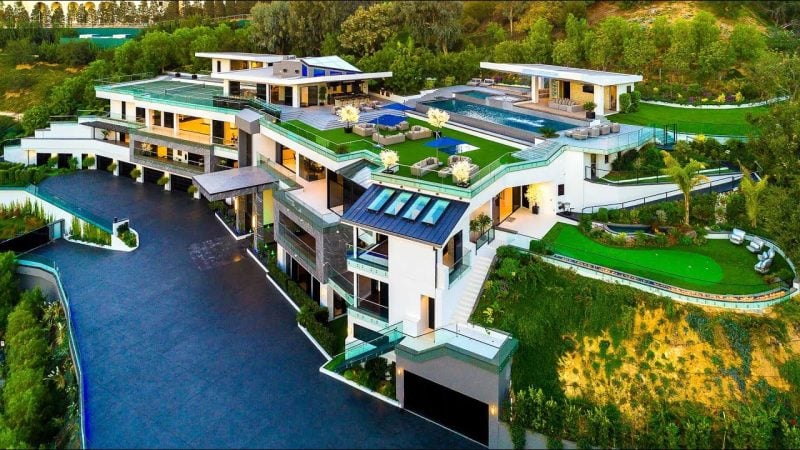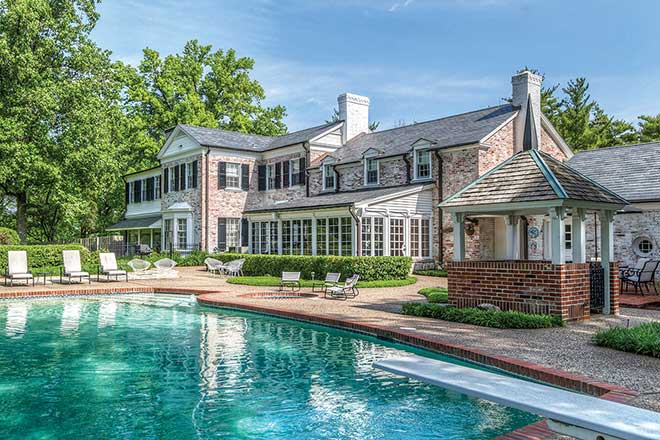The 30 Richest Places to Live in Hawaii: Most Affluent Communities
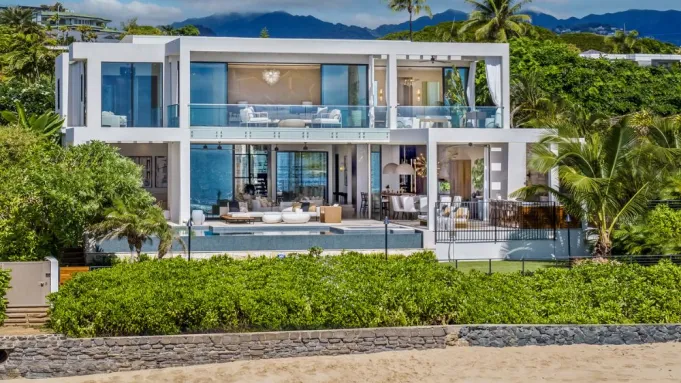
Hawaii’s diverse communities range from bustling urban centers to exclusive oceanfront neighborhoods, each offering distinct economic profiles and lifestyle opportunities.
The islands host numerous affluent areas where residents enjoy premium real estate values, higher household incomes, and luxury amenities that reflect Hawaii’s reputation as a premier destination.
Understanding which locations represent the wealthiest communities across the Hawaiian Islands provides valuable insight for potential residents, investors, and anyone interested in the state’s economic landscape.
From established neighborhoods in Honolulu to resort communities on Maui and emerging developments across multiple islands, these affluent areas showcase the economic diversity and geographic spread of wealth throughout Hawaii.
The analysis encompasses various factors including household income levels, real estate values, community amenities, and demographic characteristics that contribute to each location’s prosperity.
Here are the 30 richest places to live in Hawaii:
1. Honolulu
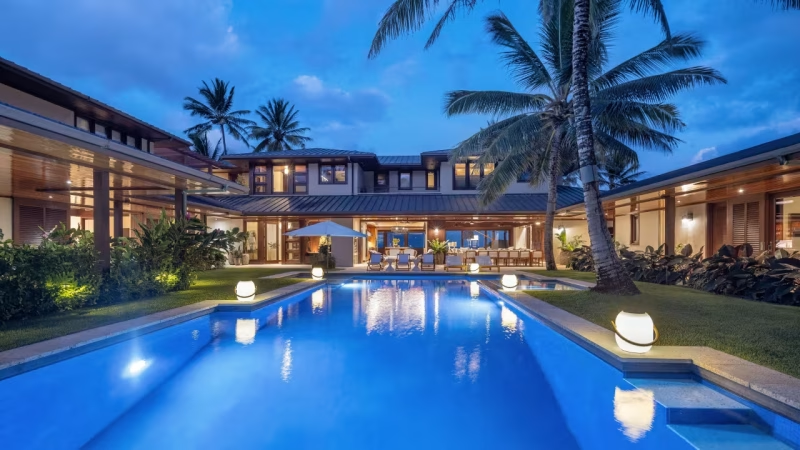
Honolulu stands as Hawaii’s wealthiest city by median household income. The state capital serves as the economic center of Hawaii, housing major businesses and government offices.
The city encompasses several affluent neighborhoods that drive its high income levels. Kahala represents one of the most prestigious areas, located on the eastern end of Diamond Head with properties frequently exceeding $3 million.
East Honolulu also contributes significantly to the city’s wealth statistics. This area features luxury residential developments and high-end real estate that attracts affluent residents.
The concentration of high-paying jobs in finance, government, and tourism supports Honolulu’s economic prosperity. Professional services and corporate headquarters provide substantial employment opportunities for residents.
Real estate values in Honolulu remain among the highest in the state. The combination of limited land availability and strong demand from both locals and mainland buyers maintains elevated property prices throughout the metropolitan area.
2. Kailua CDP (Honolulu County)
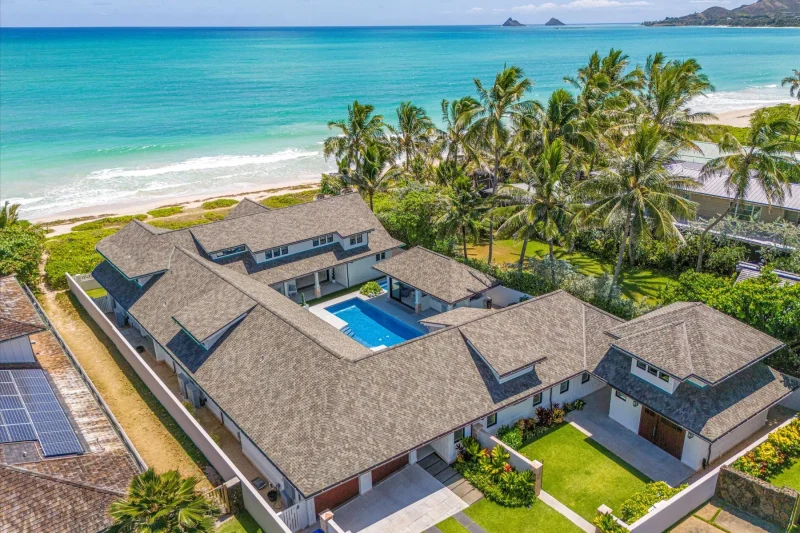
Kailua CDP ranks among Hawaii’s wealthiest communities with a median household income of $138,363. The area maintains an exceptionally low poverty rate of 4.2%.
Located on Oahu’s windward coast, Kailua is known for its pristine beaches and small-town atmosphere. The community gained national attention as the location of President Obama’s vacation home.
Real estate values reflect the area’s desirability, with median property values reaching $992,100. This beachside community attracts affluent residents seeking luxury coastal living.
Kailua offers a unique blend of natural beauty and upscale amenities. The area’s white sand beaches and turquoise waters contribute to its premium status among Hawaii’s residential markets.
The community maintains its exclusive character while providing access to outdoor recreation and water activities. Kailua’s combination of income levels and coastal location solidifies its position as one of Hawaii’s most affluent places to live.
3. East Honolulu
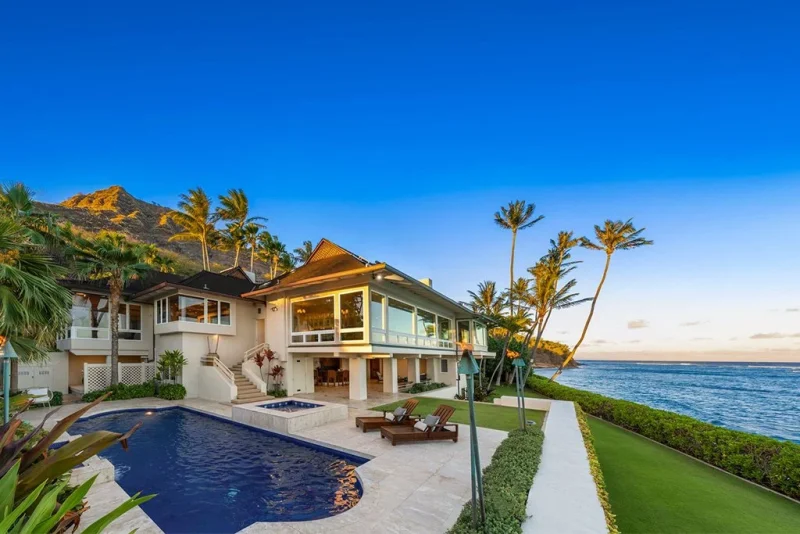
East Honolulu stands as one of Hawaii’s wealthiest communities, consistently ranking among the richest cities in the state. The area commands significantly higher home prices than Hawaii’s average of $682,000.
This affluent region encompasses several prestigious neighborhoods that attract high-income residents. The community benefits from its strategic location and proximity to Honolulu’s business centers.
East Honolulu’s real estate market reflects the area’s desirability among wealthy buyers. Properties in this region often exceed multi-million dollar price points, making it one of the most expensive places to live in Hawaii.
The neighborhood’s appeal stems from its combination of luxury amenities and prime location. Residents enjoy access to upscale shopping, dining, and recreational facilities while maintaining proximity to downtown Honolulu.
East Honolulu represents a top choice for affluent individuals seeking premium living in Hawaii’s competitive real estate market.
4. Kahala
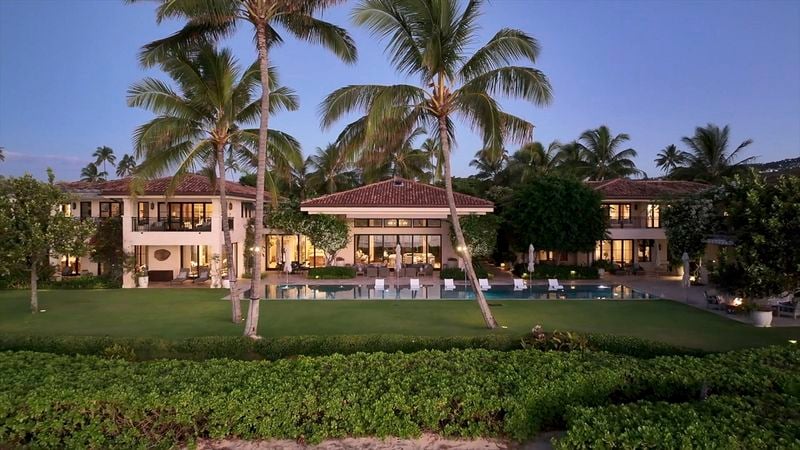
Kahala stands as one of Hawaii’s most prestigious neighborhoods, located on the eastern edge of Honolulu beyond Diamond Head. This exclusive enclave has earned comparisons to Beverly Hills and attracts billionaires, celebrities, and business executives.
The neighborhood features some of the most expensive real estate in Hawaii. Luxury homes line the coastline, offering stunning oceanfront views and private beach access.
Kahala’s reputation stems from its prime location and exclusivity. The area maintains a secluded atmosphere while remaining close to Honolulu’s amenities and business districts.
Properties in Kahala regularly exceed $3 million, with many reaching significantly higher price points. The neighborhood’s real estate market consistently ranks among the state’s most valuable.
Residents enjoy access to pristine beaches and upscale amenities. The area’s tropical setting combines with sophisticated infrastructure to create an elite residential environment that attracts Hawaii’s wealthiest inhabitants.
5. Mililani
Mililani stands as one of Hawaii’s most prosperous planned communities with a population of approximately 28,343 residents. The town maintains a strong reputation for financial stability and family-friendly living conditions.
This master-planned community offers residents access to quality amenities while preserving a close-knit neighborhood atmosphere. Mililani provides an ideal balance between suburban convenience and Hawaiian lifestyle.
The area attracts affluent families seeking safe neighborhoods with excellent schools and recreational facilities. Property values remain consistently high, reflecting the community’s desirable location and well-maintained infrastructure.
Mililani’s strategic position on Oahu provides residents with easy access to both urban centers and natural attractions. The community features modern shopping centers, parks, and golf courses that contribute to its appeal among wealthy residents.
The town’s planned development ensures consistent property standards and community aesthetics that help maintain strong real estate values.
6. Pearl City

Pearl City stands as one of Hawaii’s most prosperous suburban communities on Oahu. The city offers residents a blend of affordability and quality living that attracts middle to upper-income families.
Located in the central part of Oahu, Pearl City provides easy access to both Honolulu and the North Shore. The community sits near Pearl Harbor, giving it historical significance and stable employment opportunities.
The median household income in Pearl City exceeds the national average. Many residents work in government positions, military roles, or professional services in nearby Honolulu.
Pearl City features well-maintained neighborhoods with diverse housing options. Residents enjoy access to quality schools, shopping centers, and recreational facilities including Pearl Country Club.
The city’s strategic location and strong community amenities make it attractive to families seeking suburban comfort. Its proximity to major employment centers contributes to the area’s economic stability.
7. Wailea
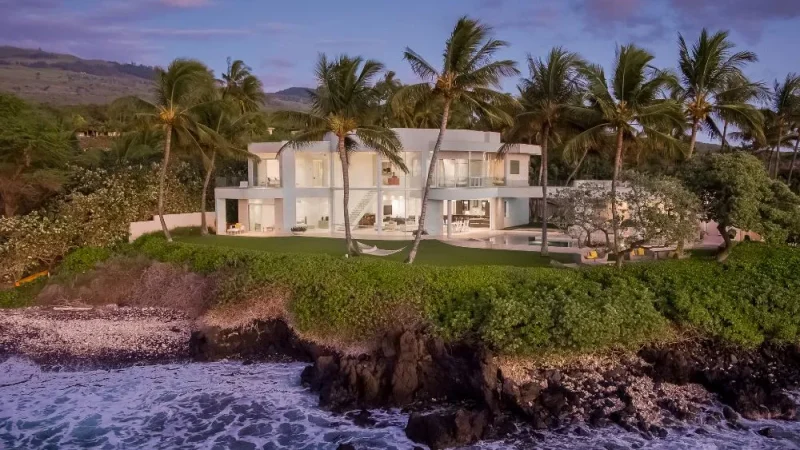
Wailea stands as one of Maui’s most prestigious residential areas, housing 5,656 residents in this exclusive census-designated place. The community’s annual cost of living reaches $51,231 per adult, exceeding both Hawaii’s state average and national benchmarks.
This South Maui neighborhood attracts affluent residents with its stunning oceanfront properties and upscale amenities. Wailea features several world-class luxury resorts, including the Four Seasons Resort Maui, Fairmont Kea Lani, and Grand Wailea.
The area draws celebrities and wealthy individuals seeking privacy alongside breathtaking ocean views. Wailea’s combination of pristine beaches and luxurious estates creates an exclusive residential environment.
Real estate prices reflect the community’s desirability, with properties commanding premium values throughout the neighborhood. The area maintains its reputation as one of Hawaii’s most expensive places to live.
8. Kaanapali
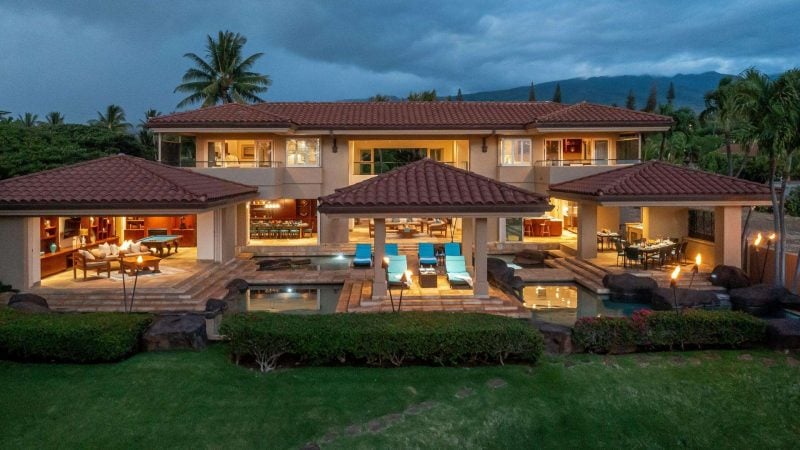
Kaanapali ranks as the wealthiest town in Hawaii among places with populations between 1,000 and 25,000 residents. The average household income in this Maui community reaches $223,037 annually.
This income level exceeds the statewide average by approximately $109,700. The significant difference highlights Kaanapali’s economic prosperity compared to other Hawaiian communities.
Located on Maui’s western shore, Kaanapali features upscale resorts and residential developments. The area attracts affluent residents who value its prime coastal location and resort amenities.
The community’s wealth stems from its established tourism infrastructure and high-end real estate market. Property values reflect the desirable beachfront location and well-developed resort facilities.
Residents benefit from the area’s combination of natural beauty and luxury accommodations. The town maintains its status as one of Hawaii’s most financially successful smaller communities.
9. Makakilo
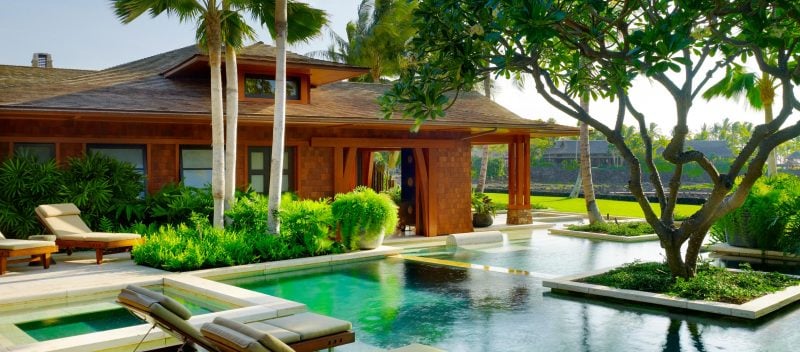
Makakilo stands as a testament to Hawaii’s suburban affluence, with a median household income of $111,036 annually. This figure significantly exceeds the national median of $67,500.
The community maintains a remarkably low poverty rate of 7.5%. This rate sits 46% below the national average, indicating widespread financial stability among residents.
Located in Honolulu County on Oahu, Makakilo houses approximately 19,565 residents. The area combines accessibility with upscale living, positioned about 20 miles from central Honolulu.
Real estate values reflect the community’s wealth, with median home sale prices around $1.1 million. High-end properties command significantly higher prices, attracting affluent buyers seeking luxury island living.
Only 15.8% of households earn less than $50,000 annually. This contrasts sharply with the 39% national rate, highlighting the area’s concentration of higher-income families.
10. Kapolei
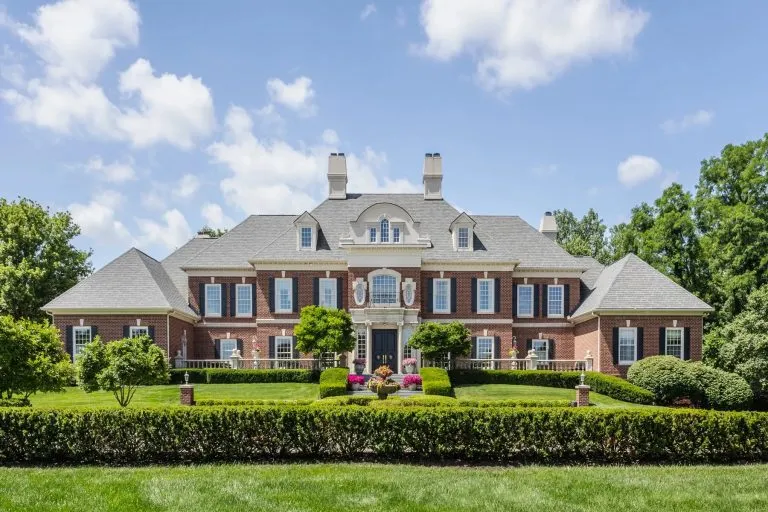
Kapolei stands as one of Oahu’s most affluent planned communities. The city showcases modern development with upscale residential neighborhoods and commercial centers.
The typical median household income reaches $116,174 according to recent data. This figure places Kapolei well above Hawaii’s state average for household earnings.
Housing costs reflect the area’s prosperity. The typical home sells for $770,982, demonstrating the premium residents pay for this desirable location.
Kapolei’s wealth stems from its strategic positioning as a secondary urban center. The community attracts professionals and families seeking suburban luxury within reach of Honolulu’s employment opportunities.
The city features master-planned developments with golf courses and resort-style amenities. These planned communities contribute significantly to Kapolei’s reputation as an expensive place to live in Hawaii.
11. Ewa Beach
Ewa Beach has transformed from a rural community into a desirable suburban destination on Oahu. The area appeals to young families seeking affordable housing options by Hawaii standards.
Single-family homes typically feature 3-4 bedrooms and at least 2 bathrooms. Home prices in Ewa Beach align closely with Hawaii’s state average of $682,000.
The community benefits from significant infrastructure improvements over recent years. Civil engineering projects expanded roads, walkways, and highway exits throughout the area.
Ewa Beach offers one of the few opportunities to find new construction homes at reasonable prices on Oahu. The sprawling suburb provides convenient access to Honolulu while maintaining a family-friendly atmosphere.
The neighborhood continues growing as more residents discover its combination of accessibility and relative affordability compared to other Oahu locations.
12. Maui
Maui stands as one of Hawaii’s most affluent islands, with several neighborhoods commanding premium prices. The island’s median home sales price reaches approximately $1.32 million.
Wailea emerges as Maui’s wealthiest neighborhood in South Maui. This exclusive area houses luxury resorts including the Four Seasons Resort Maui, Fairmont Kea Lani, and Grand Wailea.
The community of 5,656 residents enjoys a median household income of $74,347. Home values in Wailea average $1.335 million, reflecting the area’s premium status.
Kapalua represents another affluent Maui location. This community features high-end accommodations like the Mauian Hotel and Montage Kapalua Bay.
These wealthy enclaves attract celebrities and business leaders from Hollywood to Silicon Valley. The influx of affluent residents continues shaping Maui’s luxury real estate market and exclusive residential landscape.
13. Waimea
Waimea stands as one of Hawaii’s most promising areas for real estate investment and affluent living. The town attracts wealthy residents seeking a blend of rural charm and upscale amenities.
Located on the Big Island, Waimea offers cooler temperatures and expansive ranch lands. The area maintains a distinctive paniolo (Hawaiian cowboy) culture while supporting modern luxury developments.
Real estate values in Waimea have shown consistent growth patterns. Properties range from historic ranch estates to contemporary custom homes with mountain and ocean views.
The community attracts high-income professionals and retirees drawn to its peaceful atmosphere. Waimea’s proximity to world-class observatories and research facilities adds to its appeal among educated demographics.
Local amenities include upscale dining establishments and boutique shopping. The area’s agricultural heritage combines with modern conveniences to create an attractive lifestyle for affluent residents.
14. Hilo
Hilo serves as the county seat of Hawaii County and ranks as the largest city on the Big Island. The city sits on the eastern shore of the island, known for its lush rainforest environment and frequent rainfall.
The median household income in Hilo falls in the middle range compared to other Hawaiian communities. Local employment centers around government services, healthcare, education, and tourism-related businesses.
Hilo’s economy benefits from the University of Hawaii at Hilo, which provides stable employment for faculty and staff. The city also hosts several medical facilities and serves as a regional hub for the eastern portion of the Big Island.
Housing costs in Hilo remain more affordable than many other Hawaiian locations. The city offers a mix of residential neighborhoods, from older plantation-era homes to modern developments.
Hilo’s downtown area features local businesses, restaurants, and the famous farmers market. The city provides access to natural attractions like Rainbow Falls and Akaka Falls.
15. Kailua-Kona
Kailua-Kona stands as one of Hawaii’s most expensive places to live. The average cost of living reaches $3,485 monthly, ranking it as the most costly city in Hawaii.
This vibrant coastal town sits on the Big Island’s west side. It combines natural beauty with rich Hawaiian history and maintains a relaxed island lifestyle.
The median after-tax salary in Kailua-Kona is $4,826. This income typically covers living expenses for approximately 1.4 months, reflecting the area’s high cost structure.
Real estate prices contribute significantly to the area’s wealth status. The Big Island’s median sales price hovers around $715,000, with luxury properties commanding much higher prices.
Kailua-Kona attracts both residents and visitors seeking an upscale Hawaiian experience. The town offers a unique blend of modern amenities and traditional island culture, making it a desirable location for affluent residents.
16. Napili-Honokowai
Napili-Honokowai sits on Maui’s western coast, 30 miles northwest of Lahaina. This census-designated place combines stunning ocean views with pristine beaches and a tranquil atmosphere.
The community has a population of 6,870 residents. The median household income reaches $86,048, significantly higher than the national median of $67,500.
Only 5.1% of residents live below the poverty line. This rate is 64% lower than the national average, indicating strong economic stability.
The median sales price for single-family homes is approximately $2.5 million. Some luxury estates sell for over $10 million, reflecting the area’s exclusive nature.
Celebrities and affluent individuals frequently choose Napili-Honokowai as their residence. The area attracts high-profile residents due to its luxurious amenities and scenic location.
The community offers breathtaking mountain views alongside its coastal attractions. Luxury resorts dot the landscape, contributing to the area’s upscale character.
17. Laie
Laie is a small coastal community located on Oahu’s North Shore in the Koolauloa district. The town sits along the island’s northeastern coastline between Hauula and Kahuku.
This community is home to Brigham Young University Hawaii and the Polynesian Cultural Center. These institutions serve as major employers and economic drivers for the area.
The median household income in Laie places it among Hawaii’s more affluent communities. Residents benefit from a relatively stable local economy supported by education and tourism sectors.
Housing costs in Laie reflect its desirable coastal location and proximity to university facilities. Many properties offer ocean views and access to pristine beaches along the North Shore.
The community maintains a quiet, family-oriented atmosphere while providing access to cultural attractions. Laie’s location offers residents a balance between rural tranquility and modern amenities.
18. Waipahu
Waipahu represents an affordable housing option within Hawaii’s expensive real estate market. Home prices in this community fall below the state average of $682,000.
The city attracts residents seeking more budget-friendly living arrangements without leaving Oahu. Its location provides access to employment centers while maintaining lower housing costs.
Waipahu has developed into a diverse residential area with established neighborhoods. The community offers various amenities and services for daily living needs.
The area’s housing market reflects its position as a more accessible entry point for homebuyers. Properties range from single-family homes to condominiums at different price points.
Waipahu’s economic profile differs from Hawaii’s wealthiest communities but provides stable residential options. The city continues to develop its infrastructure and local businesses to serve its growing population.
19. Kihei
Kihei stands as one of Maui’s more affluent communities, though it balances wealth with relative affordability compared to ultra-luxury areas like Wailea. The town attracts residents seeking upscale coastal living without the premium prices of neighboring resort destinations.
The annual cost of living for a single adult in Kihei reaches $51,231. This figure exceeds Hawaii’s state average of $50,067 and significantly surpasses the national average of $38,433.
Despite higher living costs, Kihei offers more accessible housing markets than many Hawaiian luxury destinations. The community provides residents with oceanfront access and mountain views while maintaining a more moderate price point for both rentals and home purchases.
Kihei’s economy benefits from tourism and resort activity, creating employment opportunities that support the local affluent population. The area combines natural beauty with developed amenities, making it attractive to wealthy residents seeking island lifestyle.
20. Haiku-Pauwela
Haiku-Pauwela sits on Maui’s north shore, combining the village of Haiku with the hamlet of Pauwela. This census-designated place recorded a population of 8,595 residents in the 2020 census.
The community offers residents a median household income of $86,974 annually. This figure exceeds the national median of $67,500 by a notable margin.
The area maintains a relatively low poverty rate of 8.3%. This rate falls 41% below the national average, indicating strong economic stability among residents.
Only 22.9% of households earn less than $50,000 per year. This compares favorably to the national rate of 39% in the same income bracket.
Haiku-Pauwela provides more affordable housing options compared to other Maui locations. The community balances economic opportunity with the natural beauty of Maui’s north shore region.
21. Kahala Nui
Kahala Nui represents one of Hawaii’s most exclusive residential developments. This gated community sits within the prestigious Kahala district on Oahu’s eastern shore.
The neighborhood features custom-built luxury homes on spacious lots. Properties here typically start in the multi-million dollar range, attracting affluent buyers seeking privacy and prestige.
Residents enjoy close proximity to Kahala Beach and the renowned Kahala Hotel & Resort. The location provides easy access to high-end shopping at Kahala Mall and premier dining establishments.
Kahala Nui maintains strict architectural guidelines to preserve its upscale character. The community’s well-maintained streets and manicured landscaping contribute to its reputation as a premier address.
The area attracts successful professionals, business executives, and celebrities who value exclusivity. Its strategic location between Diamond Head and Hawaii Kai makes it highly desirable among Hawaii’s wealthy residents.
22. Wahiawa
Wahiawa sits in central Oahu, positioned between the North Shore and Honolulu. The city serves as a gateway community for travelers moving between different parts of the island.
The area maintains a more affordable cost of living compared to Hawaii’s coastal resort destinations. Housing prices remain lower than premium beachfront locations.
Wahiawa’s economy centers around agriculture and its proximity to Schofield Barracks military installation. The military presence provides economic stability for local businesses and residents.
The city offers access to outdoor recreation including Lake Wilson and nearby hiking trails. Residents benefit from a central location that allows easy travel to beaches and urban centers.
Local amenities include shopping centers, restaurants, and essential services. The community maintains a small-town atmosphere while providing convenient access to island attractions.
23. Ewa Gentry
Ewa Gentry stands out as one of Hawaii’s more affluent communities with a median household income of $130,323 in 2023. This figure represents 26.9% higher than the state median of $95,322.
The master-planned community encompasses 34 distinct neighborhoods developed from the 1990s to present. These areas feature golf course views, community pools, and modern amenities that attract middle to upper-income residents.
Located in western Oahu, Ewa Gentry houses approximately 22,000 to 26,000 residents. The community maintains a relatively young demographic with an average age of 33 years.
The area ranks tenth among Hawaii’s safest places to live according to safety assessments. Its combination of security, planned infrastructure, and higher median incomes contributes to its position among Hawaii’s wealthier residential areas.
24. North Shore (Oahu)
North Shore represents one of Oahu’s most desirable residential areas, combining natural beauty with substantial property values. The median home price reaches approximately $950,000, reflecting the area’s appeal among affluent residents.
Oceanfront properties command premium prices, often exceeding $5 million for prime beachside locations. These homes attract wealthy buyers seeking direct access to world-famous surf breaks and pristine beaches.
The community houses around 17,000 residents, creating a more intimate atmosphere compared to urban Honolulu’s dense population. This smaller scale contributes to North Shore’s exclusive residential character.
Rental properties generate significant income, with single-family homes averaging $1,800 to $3,500 monthly. Condominiums and townhouses typically rent for $2,000 to $5,000 per month.
The region’s economy relies heavily on private sector employment, with over 70 percent of residents working in private companies. Self-employment rates reach 9.2 percent, indicating entrepreneurial activity among locals.
25. Wailuku
Wailuku serves as the county seat of Maui County and represents one of the island’s more established residential areas. The town sits in central Maui at the base of the West Maui Mountains.
The community attracts residents with its blend of affordability and convenience compared to resort areas. Many government employees and local professionals choose Wailuku for its practical location.
Housing costs remain more reasonable than beachfront communities like Wailea or Lahaina. The town offers a mix of older plantation-era homes and newer residential developments.
Wailuku provides easy access to both sides of Maui through its central location. Residents can reach beaches, shopping centers, and employment hubs within reasonable driving distances.
The area maintains a local Hawaiian atmosphere with historic buildings and cultural sites. Wailuku’s economy benefits from government operations and its role as Maui’s administrative center.
26. Lanai City
Lanai City serves as the main town on the island of Lanai, one of Hawaii’s smaller inhabited islands. The community sits at an elevation of approximately 1,600 feet in the island’s central highlands.
The town was originally built as a plantation community when Dole operated pineapple farms on the island. Today, Lanai City maintains its small-town character with a population of around 3,000 residents.
Housing costs in Lanai City tend to be lower than many other Hawaiian communities. The island’s remote location and limited job market contribute to more affordable living expenses compared to Oahu or Maui.
Most employment opportunities center around hospitality, with two luxury resorts operating on the island. Other jobs include government positions, healthcare, and small local businesses.
The town features basic amenities including a school, health center, and local shops. Residents often travel to Maui for additional shopping and services via daily ferry connections.
27. Kapaa
Kapaa sits on the eastern shore of Kauai, serving as the island’s largest town. The community combines residential neighborhoods with commercial areas along the Kuhio Highway.
Housing costs in Kapaa remain lower than many other Hawaiian destinations. Single-family homes typically range from $600,000 to $1.2 million depending on location and ocean proximity.
The town attracts residents seeking a more affordable alternative to Oahu while maintaining access to amenities. Local businesses include restaurants, surf shops, and small retailers that cater to both residents and tourists.
Kapaa’s median household income falls below the state’s wealthiest communities but supports a comfortable lifestyle. The area offers hiking trails, beaches, and cultural sites within walking or short driving distance.
Many residents work in tourism, agriculture, or remote positions. The town’s central location provides easy access to other parts of Kauai for employment opportunities.
28. Kula
Kula sits on the slopes of Haleakala volcano on Maui’s upcountry region. The area attracts residents seeking cooler temperatures and rural charm away from coastal crowds.
This agricultural community features large lots with panoramic ocean and mountain views. Many properties span multiple acres, offering privacy and space for equestrian activities.
Kula’s elevation creates a unique microclimate perfect for farming operations. The region produces proteas, vegetables, and other crops that thrive in the cooler highland environment.
Home prices reflect the desirability of upcountry living and expansive lot sizes. The combination of views, climate, and proximity to Maui’s amenities drives property values higher than many mainland rural areas.
Residents appreciate the quiet lifestyle while remaining within driving distance of beaches and Kahului’s services. The area maintains a strong agricultural character despite increasing residential development.
29. Waimanalo
Waimanalo ranks among Hawaii’s wealthiest communities with a 2025 home value of $1,059,632. This represents substantial growth from $766,048 in 2020 and $677,380 in 2015.
Located on Oahu’s windward coast, Waimanalo offers residents a mix of rural charm and valuable real estate. The area features some of the island’s most beautiful beaches alongside residential neighborhoods.
Property values have increased significantly over the past decade. The community attracts buyers seeking a more laid-back lifestyle while maintaining proximity to Honolulu’s urban amenities.
Waimanalo’s real estate market reflects broader trends across Hawaii’s premium locations. The area combines natural beauty with investment potential, making it attractive to affluent residents seeking island living.
30. Makaha
Makaha sits on Oahu’s western coast with a population of approximately 10,087 residents. The community offers a more affordable option compared to Hawaii’s wealthier neighborhoods.
The typical household in Makaha earns $51,278 annually. This falls below the national median of $67,500, reflecting the area’s economic challenges.
The poverty rate stands at 34.5%, which is significantly higher than the national average. Despite economic hurdles, Makaha attracts residents seeking oceanfront living at lower price points.
Makaha Shores Condominium provides waterfront housing options. Units range from studios to three-bedroom layouts, with prices typically between $150,000 and $400,000.
The location offers beaches and natural beauty characteristic of Hawaii’s western shore. Residents enjoy a more relaxed pace compared to urban Honolulu areas.
Economic and Demographic Factors Shaping Hawaii’s Affluent Communities
Hawaii’s wealthiest communities are shaped by tourism-driven real estate markets that create significant property appreciation and income inequality patterns that concentrate prosperity in specific geographic areas.
Influence of Tourism and Real Estate
Tourism generates substantial economic activity that directly impacts property values in Hawaii’s affluent areas. Communities near popular tourist destinations experience elevated real estate prices due to vacation rental demand and investment property purchases.
Key Tourism-Real Estate Connections:
- Vacation rental income potential drives property investment
- Tourist proximity increases land scarcity and values
- Resort development creates employment clusters
- International buyers target premium locations
Real estate appreciation rates in wealthy Hawaiian communities often exceed national averages. Properties in areas like Wailea, Princeville, and Kahala benefit from limited land supply combined with sustained visitor demand.
The tourism industry creates economic multipliers that benefit affluent areas through increased business opportunities. Restaurant ownership, luxury service providers, and property management companies generate substantial income streams for residents in these communities.
Foreign investment, particularly from Asia-Pacific nations, contributes to property value inflation in premium Hawaiian locations. This international capital flow creates wealth concentration effects in established affluent neighborhoods.
Demographics and Income Distribution
Hawaii’s affluent communities demonstrate distinct demographic patterns that differentiate them from state averages. These areas typically feature higher education levels, older median ages, and specific professional concentrations.
Demographic Characteristics of Wealthy Areas:
- Higher percentage of college graduates
- Increased married couple households
- Professional and managerial occupations
- Lower child dependency ratios
Income distribution data shows significant disparities between Hawaii’s wealthiest and poorest areas. The top income quintile concentrates in specific geographic regions, creating distinct economic boundaries across the islands.
Educational attainment correlates strongly with residence in affluent Hawaiian communities. Areas with higher median incomes typically show elevated rates of advanced degrees and professional certifications among residents.
Household composition in wealthy areas favors dual-income professional couples without children or with grown children. This demographic pattern supports higher discretionary income levels and property investment capacity.
Lifestyle and Community Features of Wealthy Hawaiian Neighborhoods
Wealthy Hawaiian communities offer exclusive access to world-class recreational facilities and private beach clubs. These neighborhoods maintain strong cultural preservation programs while providing residents with luxury amenities that define island living.
Amenities and Recreational Opportunities
Private beach access serves as the cornerstone amenity in Hawaii’s most affluent neighborhoods. Residents in areas like Kahala and Diamond Head enjoy exclusive stretches of pristine coastline away from tourist crowds.
Golf and Country Clubs provide social hubs for wealthy residents. The Waialae Country Club in Kahala hosts PGA tournaments and offers championship-level courses. Private tennis facilities and equestrian centers complement these sporting venues.
Luxury spas and wellness centers integrate traditional Hawaiian healing practices with modern treatments. Many neighborhoods feature:
- Private fitness centers with ocean views
- Meditation gardens and yoga pavilions
- Saltwater pools and infinity spas
- Personal chef services and wine cellars
Concierge services handle daily logistics for residents, from property maintenance to travel arrangements. Security services maintain privacy and exclusivity through gated entrances and 24-hour surveillance systems.
Cultural Preservation and Community Initiatives
Wealthy Hawaiian neighborhoods actively support traditional Hawaiian cultural practices through private funding and community programs. Residents often sponsor hula schools, traditional canoe clubs, and native language education initiatives.
Conservation efforts protect sensitive coastal ecosystems and native species habitats. Private landowners in exclusive communities fund marine sanctuaries and reef restoration projects that benefit the broader Hawaiian environment.
Community foundations established by affluent residents provide scholarships for local Hawaiian students. These programs focus on preserving indigenous knowledge while supporting modern educational opportunities.
Art galleries and cultural centers within wealthy neighborhoods showcase Hawaiian artists and traditional crafts. Private collectors frequently loan pieces to public museums, maintaining cultural accessibility despite residential exclusivity.

